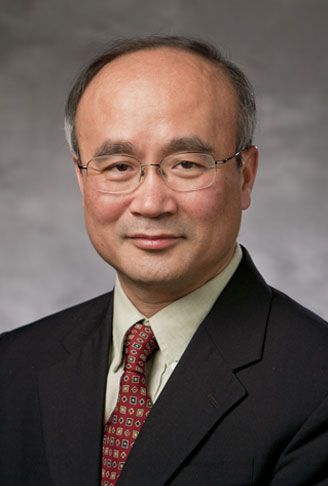大会邀请报告 Plenary Lectures
The wonders of electron density: from half an electron to noncovalent interactions of biomolecular complexes Weitao Yang Department of Chemistry, Duke University, Durham, USA Interactions between electrons determine the structure and properties of matter from molecules to solids. To describe interacting electrons, the simple three-dimensional electron density can be used as the basic variable within density functional theory, negating the need in many cases for the massively complex many-dimensional wave function. This lecture will review the concept of electron density and many of its remarkable features, including latest developments. Electron density determines the energetics in electron transport, solar energy harvesting and conversion, drug design in medicine, catalytic processes in enzymes, and many other processes in science and technology. Particularly, chemical and redox reactions in biological systems will be featured. Electron density can be used to visualize also non-covalent interactions such as hydrogen bonds, van der Waals attractions and steric repulsions. Electron density also naturally leads to the concepts of fractional charges and fractional spins, which are key to understanding and progress. References 1. J. Cohen, P. Mori-Sanchez, and W. T. Yang. Insights into current limitations of density functional theory. Science, 321:792, 2008.
|
||||
|
Weitao Yang was born in Chaozhou, China. He received his B.S. degree from Peking University and Ph.D. degree from the University of North Carolina at Chapel Hill. He is currently the Philip Handler Professor of Chemistry and Physics at Duke University. Yang’s interests are in developing theory and applying it to complex problems in chemistry and biology.
Yang has contributed to the development of density-functionals that go beyond the local density-functional approximation. The Becke-Lee-Yang-Parr (B3LYP) density-functional, the combination of the Lee-Yang-Parr correlation functional with the Becke exchange functional, is the most widely used approximation in practical electronic structure calculations. His recent studies have revealed the origins of failure of common density functional approximations as the delocalization and static correlation error, through the perspectives of fractional charges and fractional spins. This further leads to the development of much improved approximations. Yang has developed multiscale approaches combining the methods of quantum chemistry and statistical mechanics to address the reaction mechanisms of solution and enzymatic catalysis. Professor Yang has held visiting professorships from many institutions including the Japanese Society for Promotion of Science, Kyoto University, the University of Hong Kong, Tsinghua University and Peking University, and Vrije Universiteit Brussel. He received the 1997 Annual Medal of the International Academy of Quantum Molecular Science, and the 2006 Humboldt Research Award for Senior U.S. Scientists. He has held Sloan fellowship, and is the co-author (with Robert G. Parr) of one of the leading textbooks on density-functional theory. He is an elected member of the International Academy of Quantum Molecular Science, http://www.IAQMS.org/, an elected fellow of American Association for the Advancement of Science and of the American Physical Society. Yang is recognized by the Institute for Scientific Information as a Highly Cited Researcher. In 2010, Yang was the International Solvay Chair in Chemistry, International Solvay Institutes for Physics and Chemistry, Brussels, Belgium. In 2012, Yang was awarded the 2012 American Chemical Society National Award for Computers in Chemical and Pharmaceutical Research. In 2014, Yang was awarded the Florida Award by the Florida Section of the American Chemical Society. |
|||
中国化学会秘书处
|
地 址:北京市中关村北一街2号 |
|
|
个人会员:qiaoqinzhao@iccas.ac.cn |
学术奖励:yuehe@iccas.ac.cn |

